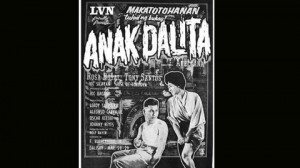
Like its European counterparts, Baguio Cinematheque will screen, for free, Philippine movies long forgotten or restored after years of neglect, said Briccio Santos, chair of the Film Development Council of the Philippines (FDCP).
The films have been converted into digital format, “so maintaining the cinematheque won’t be as costly as people may think,” he added. The FDCP is shouldering all expenses for the 75-seat theater.
On Saturday night, the facility screened its opening film, “Anak Dalita,” from 1956, directed by Lamberto Avellana and featuring Tony Santos and Rosa Rosal.
Benguet-based Japanese filmmaker Koji Imaizumi and Cordillera photographer Tommy Hafalla were among those who attended the inaugural screening. Coordinator Joel Arthur Tibaldo’s team distributed playbills of future screenings: the 1940 musical film, “Pakiusap”; Manuel Conde’s 1941 adventure film “Ibong Adarna”; and the 1939 drama, “Tunay na Ina.”
Baguio was picked for the first cinematheque because of its large and diverse student population who may appreciate classic Filipino movies, Santos explained.
Soon, three more
Before the year ends, he said, three others will open in Iloilo, Marawi and Davao. The coordinators of these theaters—Princess Pacasum of Marawi, Dan Cartagena of Iloilo and Peter Lat of Davao—attended the Baguio event.
In two years, FDCP will have established 16 cinematheques for 16 regions, said Santos. The Baguio launch “sets in motion the government’s task to retrieve and centralize all films under a national archive,” he told the Inquirer.
Santos said he has urged President Benigno Aquino III to issue an executive order that would require all agencies to turn over their film inventory to the FDCP for preservation. He said studios like Regal Films, LVN Pictures and Sampaguita Pictures and the University of the Philippines Film Institute’s Film Center have either unloaded their inventory to the FDCP or are in the process of doing so.
FDCP has custody of about 1,000 films, among them the 1937 film, “Zamboanga” (the oldest in the collection) featuring Fernando Poe Sr.
Santos said the FDCP is “like a hospital,” having acquired equipment and skilled workers to restore films left to rot in government storage areas. “Many came to us in tangles; we hope to restore enough (portions) to create a digital copy.”
Santos said Mike de Leon, one of the country’s top directors and cinematographers, has donated most of his editing equipment to the FDCP.
France’s ministry of culture is sending two film archivists to train FDCP, he said, adding that many “missing” Filipino films are in abandoned stock rooms around the country, art house archives abroad, or kept by collectors.
Negotiations
Tibaldo turned over to Santos reels of Conde’s 1950 movie, “Siete Infantes de Lara,” which he found in a government warehouse.
Santos said four films by the late Lino Brocka may be in France, and that there are more than 100 Filipino films stored at the United States Library of Congress.
The Philippine government, he said, is negotiating to retrieve these films or obtain copies for the national archives.